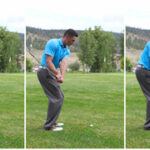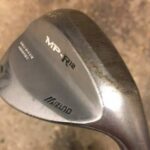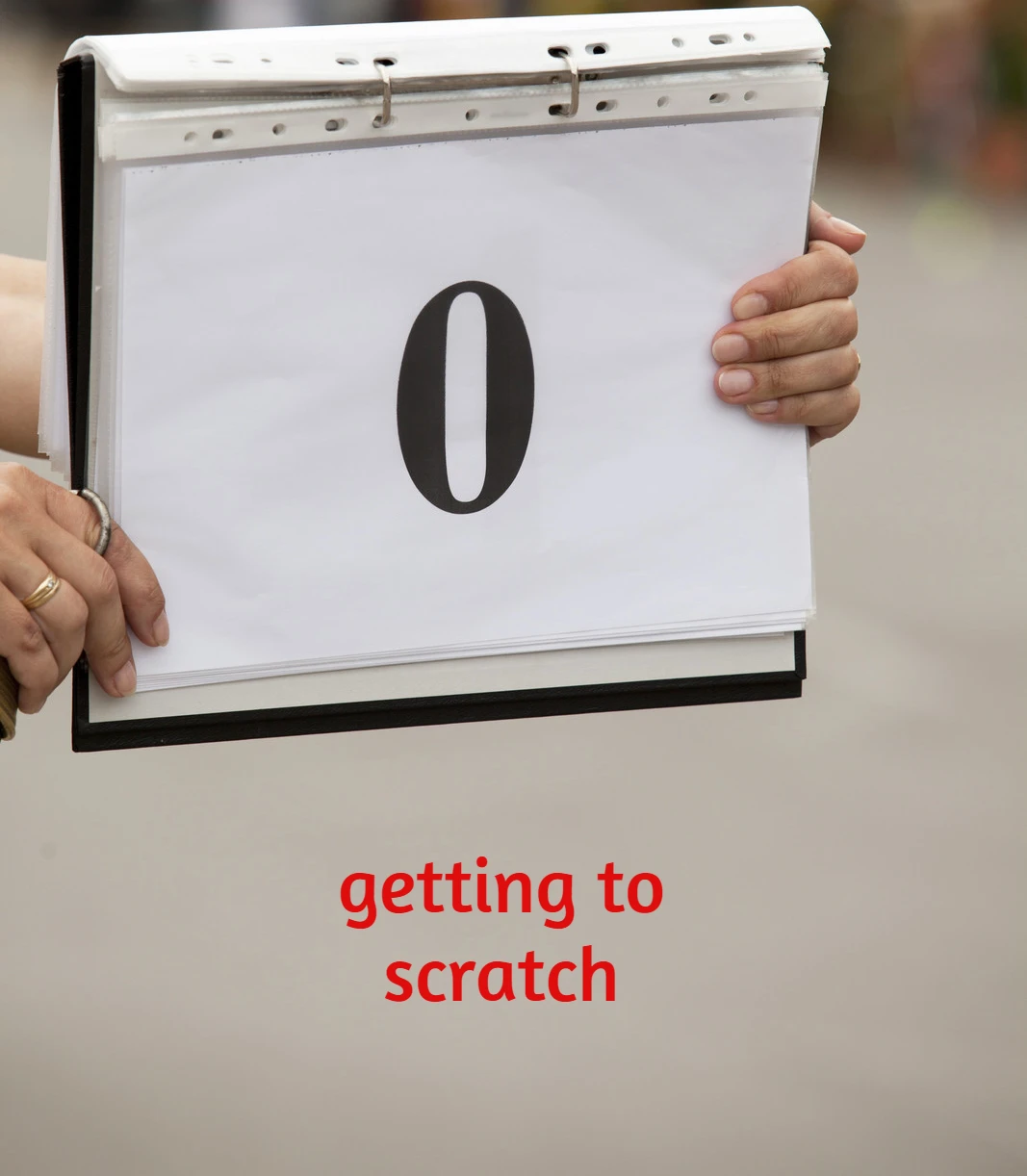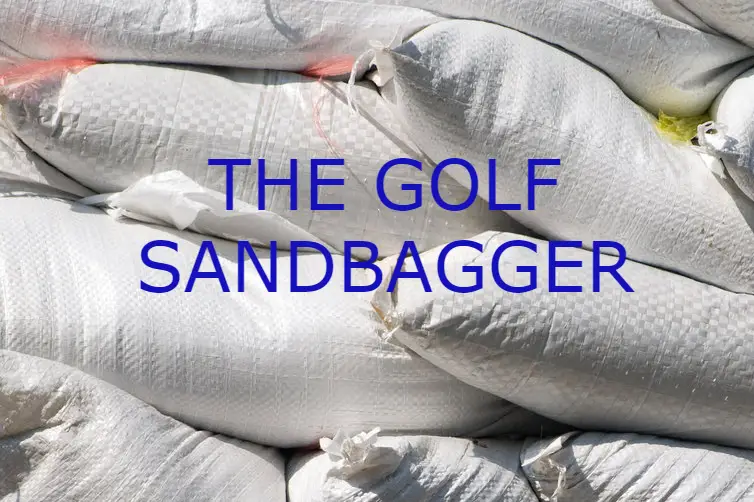I played in a Texas scramble competition a couple of weeks ago. On the 18th, my partner hit a nice drive down the middle. I had a free shot and smashed a driver as hard as possible. The golf gods were smiling and we found ourselves a long way up this par four with about 70 yards to the green. A simple pitch and we had a good chance at birdie. I played first and…yes it happened! The ball disappeared off at 90 degrees and shanking wedges was back in my life! So just what caused this and what can I do about it?
- One shank doesn’t mean disaster
- The shank can have different causes
- It can be fixed
- Equipment can help
The Dreaded Shank
Even saying the word feels uncomfortable for most golfers, a bit like actors who won’t say Macbeth because it brings bad luck. Instead of saying ‘that Scottish play’ we resort to euphemisms like ‘hosel rockets’ or ‘a touch of the rights’. Whatever we call it, the result is the same: the ball heads off (for a right-handed golfer) somewhere between well right and almost sideways.
This is something that is quite close to my heart because I had a real crisis of shanks about 5 years or so ago. In my case, it was almost uniquely with shorter clubs, especially wedges, but your mileage may vary. I have even seen people shank a driver! This means that whenever I do hit one of these horror shots, it is hard to get the whole ‘IT’S BACK!’a touch of the rights’ image out of my mind.
The first thing to remember is that hitting an occasional shank is part of the game. If you go on YouTube, you can find plenty of examples of pros doing this is tournaments. It happens. In fact, it is often considered to be a good player’s miss because traditionally, the sweet spot of old school blades was near the heel. Given the tiny face on some of these clubs, the difference between perfect and shank was pretty small.
For my shank, I am not getting overly concerned. I was attempting to hit a softer shot from slightly funny lie and I really am not very good at this sort of manipulation. I almost certainly slowed down in my down swing while I was also trying to open the club up slightly and the ball heading right was the result. Unless it appears again, and a few times at that, I am just moving on.
Fixing the Mental Game of Golf
This is important because the mental effect is actually far more significant than the physical one. Having the idea of a shank in your head is a real problem. When I hit them regularly, I didn’t hit it straight even when it wasn’t a shank. I was so concerned about the ball heading right that even solid contact would involve me pulling it miles left to anticipate the mishit.
Easier said than done without a doubt, but it is important to set up to every shot expecting a perfect result. There is no compensating for a ball that heads off to the side so don’t try. Attempting to aim left of whatever is just increasing the odds of a poor shot.
It is also extremely complicated to put a free, relaxed swing on the ball if all we have in our head is the idea that it is going to go horribly wrong.
Of course, this is all well and good, but what we really want to know is what causes the damn thing in the first place and what we can do to fix it.
What Causes the Shank?
I would love to give a simple answer to this, but there can actually be multiple causes and this is because the shank isn’t just one type of shot. The one thing that is sure is that “keep your head down” isn’t helping!
When most of us think of this shot, we are talking about the ball hitting the hosel where the shaft meets the club face. Because this is round, it inevitably fails to send the ball straight. This is certainly one variant, but there are at least two others. The one which I found problematic actually came from an attempt to improve my swing. I was working on getting my hands in front of the ball which is key to good ball striking. Unfortunately, this lead to me basically leading with the shaft into the ball and the face rotated miles open.
The result, more often than not, was that I hit either the hosel or the face but pointing so far right that the result was basically the same: the ball went right.
The other common type is the toe shank. The golfer misses so far off the sweet spot that the club barely hits the ball at all and heads off, once more, to the next fairway.
The result might be the same for these two shots but they are almost polar opposites. Working on a fix for one is going to make the other even worse. Fortunately, it is quite easy to tell which is which. Generally, the feel is very different for a start. Checking the mark made by the ball on the club should also leave a clue.
Once, you know which one is the problem, the next step is why. Once again, please don’t let your playing partners convince you that it is because you are lifting your head. This old chestnut should be dead and buried by now. The cause can actually be quite counter-intuitive.
For example, if we are hitting the hosel, it might be tempting to thing that it is simply because we are too close to the ball. This could be the case, but more often than not, it is the complete opposite. We might actually be too far away and we over compensate, reaching for the ball, and hitting it too near the heel of the club. If the fix we try involves moving further away, we are making the problem worse.
This doesn’t mean that you shouldn’t change the distance you stand from the ball. In fact, this can often help. However, you should try closer as well and the adjustment should be very small (an inch or two, not a foot!)
Simple Fixes for the Shank
This is the time to say that I am not a golf instructor and getting rid of problem completely should involve getting a qualified eye of your swing, if possible with something that captures club head data and strike location. However, this isn’t always possible and there are other ways to go about finding a cure.
The best method in my personal experience is to rebuild the swing. I don’t mean learning the game all over again, simply making the swing very short and gradually lengthening it. This is very simple to do. It is important to use the club that is giving the problem. Given that shanking wedges is most common, take your wedge to the practice ground with a big bucket or two of balls.
The key is to start with a very small swing, perhaps taking the club back only a foot or two. I don’t mean hitting a chip shot exactly, because often this changes set up which makes it a different swing altogether. Simply getting in stance like a normal full shot, except doing a very partial swing.
Contact here will generally be fine, although you might still shank one or two. It doesn’t matter. It is all about gradually getting used to hitting the middle of the club again. Over time, after a 5-10 shots, gradually lengthen the swing. After a good bucket of balls, hopefully, the very short swing has become perhaps a half swing.
This process takes time (at least it did for me) but you can feel the progress. I got used to hitting the ball in the middle which changed my expectations, helped me to relax and swing better.
Equipment Can Help
Another approach to take is looking at what you actually have in the bag. This isn’t necessarily fixing the problem and is something of a band aid. However, for me it was a way to keep playing golf while I worked on a fix. Without this, I might simply have put the clubs away for ever.
My equipment change was somewhat ironic given that I generally have always been a better iron player than anything else. When I started shanking wedges, it also affected my irons. What I did was basically remove irons and wedges from my bag. This seems at best extreme and at worst impossible, but it did work for me. I had high lofted fairways in the bag to cover the longer and mid irons. The sweeping swing seemed to eliminate the risk of hosel-first contact. At the shorter end of the bag, I actually played with 4 Cleveland niblicks! If you don’t know these, these are essentially chippers with varying lofts that can be hit for full shots. They are short, almost putter-length and very in lofts. I had the full set at 37,42,49 and 56 degrees.
This short, upright club and heavy head weight also seemed to make it next to impossible (but not completely impossible) to shank them. I didn’t play my best ever golf at this time, but I did play and play OK. Compared to not playing at all, this equipment choice was an absolute god-send.
Shanking Wedges Isn’t The End of the Golfing World
Let’s just come out and say it: the shank might be the most unpleasant shot in the golfing world. It can take most of the joy out of the game. However, an occasional hosel rocket or two isn’t the end of the world. Even regular issues can be fixed. Don’t give up on it, try to build the swing back up and if necessary, play around with your equipment while you fix the problem.







Oh man…My shank came outta nowhere about a month back as I was practicing with my 46* wedge. Now I do it with my 8-iron when I try to take something off the shot. Then some days they go straight…lol
Good article and hope to read more from you soon!
Hi Ferrell,
Ah, the dreaded s word! I had a season of them about 6/7 years ago and it was horrible!
I actually played a bit of golf without irons that year to avoid the problem, going from higher-lofted hybrids into 4 cleveland niblicks!
Then the shanks just disappeared as quickly as they arrived and I still have no idea why!
Best,
Nick